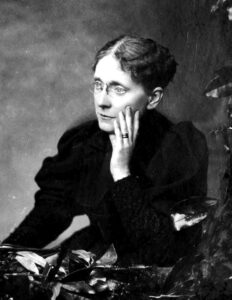Biography of Naomi Anderson
This article explains the lifestyle of Naomi Anderson as an activist and her pursuit for an advocate of the grant of political rights, especially to women.
She determines to lay down her life advocating that the right to vote should be extended to more people, especially to women.
Naomi Anderson the Women’s Rights Advocate
Naomi B. T. Anderson was an important and well-known leader in the fight for women’s and African Americans’ rights in the 19th Century.
She campaigned for women’s rights all through her life without changing her mind despite rejection, persecution, and oppression.
She continues pushing forward not minding whether she is losing or not. She advocates for women that they have the right to vote and that the right to vote should not be limited to men only but to be extended to more people, especially to women.
Her campaigns to bring about political or social change were very extraordinary and she focuses on women due to how they were denied some of the rights.
Naomi Anderson is an African American suffragist, temperance leader, civil rights activist, and writer who fight for equal rights for all genders and races in the 1870s.
She wrote poetry and gave speeches highlighting the experience of African American women who were still enslaved by their inability to vote.
Get to know; Alice Stone Blackwell biography
Brief Historical Naomi Anderson
Anderson was born to free black parents, Elijah and Guilly Ann Bowman, in Michigan City, Indiana.
The Bowmans were one of two black families in Michigan City where Anderson was barred from the segregated Indiana Public Schools.
He skin color affected her to attend public school and this made her mother to hire a private tutor which enabled her to develop her writing skills.
When the Michigan City white community noticed her talent in poetry, she was admitted to a previously all-white school at the age of twelve (12).
What is Naomi Anderson famous for?
Naomi Anderson was an African American suffragist, temperance leader, civil rights activist, and writer who advocated for equal rights for all genders and races in the 1870s.
The aftermath after the death of her mother
There was a decline in the pursuit of knowledge by the Naomi after the death of her mother.
Anderson’s father didn’t place the same emphasis on education due to how female children were regarded then, keeping her from attending college after the death of the mother in 1860.
Naomi was married at age of twenty to William Talbert, a barber from Valparaiso, Indiana.
She returned to Michigan City less than two months after her marriage to bury her only sister.
It was here that she also buried her first son. Her brother had died prior to this serving in Jacksonville, Florida in the Union Army.
Relocation of Naomi Anderson and work-life
In 1868 she moved with her husband, son, and father to Chicago, where she began her activism with the small knowledge gained when she was in school.
Shortly after a lecturing tour, she moved with her family to Dayton, Ohio. She then lived in Cincinnati, Ohio, and after her husband’s health failed, learned the hair-dressing trade and moved with her family to Portsmouth, Ohio.
There, she worked to support her family and organized a children’s home. She managed the home for four months but left the work due to low pay and family responsibilities. She passed the board of examiners and was employed as a teacher at the time of her husband’s death in 1877.
Naomi Anderson Remarried
After her husband’s death, Naomi Anderson moved again in 1879 to Columbus, Ohio, and built up her hairdressing business.
She married her second husband, Lewis Anderson, in 1881, and they retired to a farm near Columbus.
Subsequently, she moved to Wichita Kansas in 1884, where her husband was a successful banker.
Naomi Anderson Suffrage
Naomi volunteered with the International Organization of Grand Templars in Chicago and later the Women’s Christian Temperance Union to promote temperance.
After that, she began speaking about women’s suffrage, beginning at the first Woman’s Rights Convention in 1869.
She made a lecturing tour in 1869 through southern Illinois, Indiana, and Ohio.
From 1869 through the 1870s, she wrote articles on women, Christianity, and temperance for newspapers including the Chicago Tribune and the Dayton Journal.
Naomi Anderson wrote a poem for the United States Centennial in 1876. This reflected her Christian faith, thankfulness to the leaders who led the abolition of slavery, and hope that African Americans would serve their nation, pursue educational opportunities, and bring our latent talents up on a level with mankind.
Naomi Anderson became an advocate of Women’s Rights.
Upon moving to Wichita with her second husband, she was “known as a lecturer, poetess, and an advocate of Women’s Rights.
She also found that the white women who had organized a children’s home would not admit children of color, so Anderson gathered a council of women of color and organized a “home of their own.
When Anderson lived in San Francisco in the 1890s, she worked alongside white suffragists to campaign for one of the nation’s first state woman suffrage referendums.
Naomi Anderson’s rhetoric spoke to previously enslaved men and asked them to acknowledge that African American women would continue to be enslaved until they received the right to vote.
Her dream comes through, now women are enjoying her labor and campaign.
receiving considerable praise from other suffragists for her contributions to the movement
